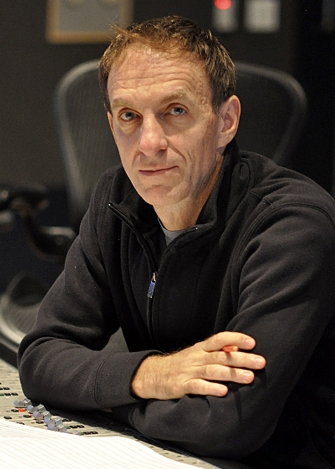David Mermelstein is an AwardsLine contributor. This article appeared in the Nov. 28 issue of AwardsLine.
For Life of Pi, his third collaboration with director Ang Lee, composer Mychael Danna incorporated the sounds of Asia—especially India—into a multicultural stew of a score. Along with a full studio orchestra, accordion, piano, celesta, and mandolin, Danna added Balinese gamelan, Persian ney, basuri (an Indian transverse flute), Indian percussion, and, of course, the sitar. Plus, the venerable Pandit Jasraj (still going strong at 82) contributed vocals.

“Pi is a 21st-century citizen; he belongs nowhere and everywhere,” says Danna of the lead character in the film, based on an acclaimed novel that blends adventure and spirituality. “It’s set in India but in a French colonial town. So we have accordions and mandolins playing Indian melodies and sitars playing French melodies. We also have an English boys’ choir singing Sanskrit and a Tibetan chorus singing in Latin. The goal was to carefully—and, hopefully, artfully—blend every culture that Pi comes across and then makes part of his own essence.”
Combining the tale’s fantasy elements with its more profound truths didn’t come easy. “Most of the film depicts Pi as a young boy or young man,” Danna says, “and for the music to connect to him, we needed that sense of boyish wonder, that sense of awe and youth to the sonorities. My first drafts didn’t have that.”
Complicating matters for the composer was the film’s great reliance on CGI. “It technically makes it much more difficult to score,” Danna explains, “because those elements don’t come in until the very end of the process. So for a lot of things, I had to rely on Ang’s descriptions. I’d be working with storyboard or crude versions of a scene. There’s an extra layer of removal from what you’re scoring when you work like that. I think it worked out fine, but it was a bit scary.”
The biggest challenge came in the “Storm of God” scene, in which Pi and a tiger named Richard Parker lose the raft of supplies roped to their rowboat. “It’s a very complicated scene in the sense that the CGI was crude when I wrote the music. The score has to get harsh and big—this concept was very important to Ang—because the God of the storm is the real true God, and that God has no personal connection to Pi, no compassion for him. He’s a God far removed from puny human endeavors—as opposed to the gods Pi knew as a child, the mythological Indian gods. And Ang wanted a big transfer here, a shift to awesome and frightening and powerful and overwhelming That’s a shift in color and theme, and it had to be anchored in other places in the score where Pi comes to know God with a big ‘G.’ And we wanted to do this on a very big scale, with big orchestra and big choir, because Pi kind of has a Job-like moment, and God smashes him with the back of his hand into the water and crushes him. That scope was very challenging to do. It’s the biggest group of musicians we used, with a large percussion section and choir. It was very wild, with everyone playing with abandon and a great deal of power and passion.”
To get there, Danna worked closely with Lee. “He’s very involved,” the composer says. “It’s a true collaboration. We did a lot of talking about the best role for the music before shooting, but when we saw the film, we shifted our ideas of what the music should be doing. It’s a film about big questions, and it seemed that the music had to acknowledge that. But underlying it had to be a kind of simplicity and a line that helps join everything together from beginning to end and emotionally guides us through Pi’s life. That’s something we worked on very carefully, music as a compassionate guide. And we wanted to show that compassion to both Pi and the viewer.”

